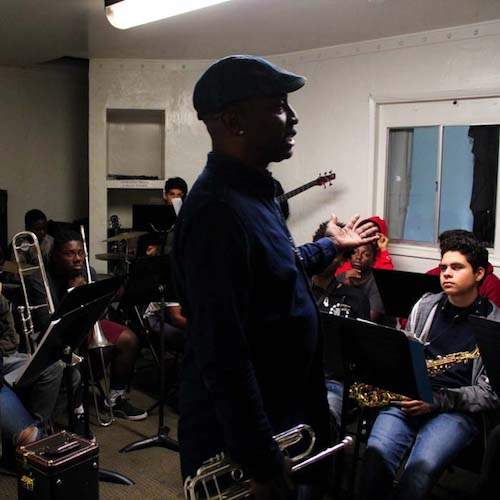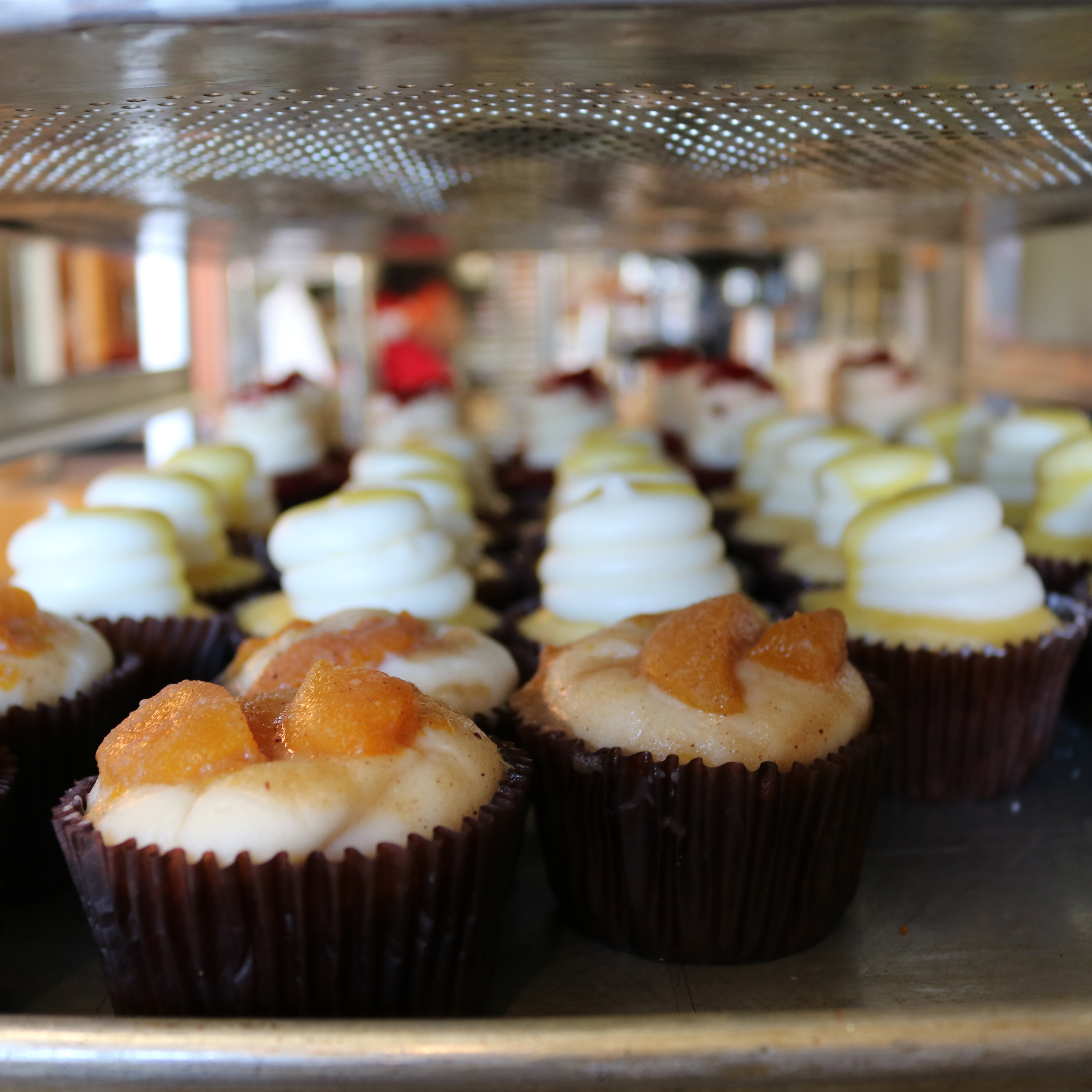The packed building vibrates with energy. Lively rhythms bounce off multicolored walls, echoing through multiple studio classrooms while children stream in and out.
“Students that come here develop lifetime friendships,” said Lula Washington, the co-founder of the Lula Washington Dance Theatre in Leimert Park. “From the mothers to the fathers to the grandparents, everyone will remain friends forever because they met here at this dance studio.”
"The Lula Washington Dance Theatre (LWDT) has been a cultural fixture in the South Los Angeles community for 38 years." In 2000, Lula Washington and her husband, Erwin Washington, outbid Magic Johnson to buy a new building for their already acclaimed dance company and moved their studio from Adams Boulevard to Crenshaw Boulevard near the Los Angeles Memorial Coliseum by USC. LWDT has moved and inspired countless audiences around the world through African and Afro-Haitian dance.But for aspiring dancers in South Los Angeles, LWDT has done so much more. She’s given them a second home./p>
The building is a performance hub, especially on Saturday mornings. Similar to the way some people in the community take their kids to hang out at the barbershop on the weekend, parents bring their children to Lula’s to reconnect with the community.
“It’s serving as a social place where issues can be discussed, friendships can be developed, and camaraderie for the community is created,” Washington said in an interview.
Anyone who enters the purple building on Crenshaw Boulevard will immediately consider the magnitude of Lula Washington’s accomplishments.
Washington is responsible for significant contributions to the Leimert Park community and the entertainment industry at large. Washington’s credits include dance performances at Crenshaw's Taste of Soul, LA’s largest one-day street festival, and various Leimert Park celebrations, designing choreography for James Cameron’s “Avatar” and Disney’s “The Little Mermaid,” and personal performances in the Academy Awards telecast and the films “Sgt. Pepper’s Lonely Heart’s Band” and “Funny Lady.” In 1984 the choreographer graduated from UCLA with a Master of Fine Arts in Dance. Washington is also one of the five founding members of the International Association of Blacks in Dance.
Walking into the studio’s purple building on Crenshaw Blvd. for the first time, it is quickly apparent how much Washington has accomplished.
The walls of the former airplane hangar are lined with eye catching plaques and awards delineating her multifarious feats. But the real tell is Washington herself.
The woman is a force, the magnetic center of any room she’s in. Dressed in all black--her posture is decisive--her movements are fluid and relaxed. Amid the dizzying activity of the dance studio, she walks calmly, as if through the eye of a storm.
Settling into a seat by at the front desk, Washington compliments the new haircut on a girl who just popped in through the front door.It’s much shorter since the last time they saw each other. The girl smiles and bounds off toward Studio A.
Washington’s husband Erwin and their daughter, Tamica Washington-Miller, oversee administrative tasks from offices upstairs.
“In the eighties, when the company first started, there were only a handful of dance companies, that were very specifically catering to African-American kids, Mexican kids, or people with no money,” said Washington-Miller, the associate director of the organization.
Washington-Miller is rearranging some papers on her desk. She bears a striking resemblance to her mother--down to the shape of their eyes and heart-shaped faces.
“There are a lot of organizations that have modeled themselves off of the work that we do,” Washington-Miller said.
Although her mother is the figurehead of the organization, every member of the family has an essential role in making sure all the administrative and creative components of the studio run smoothly.
“It’s been the three of us since the beginning. I’m an only child, but the truth is that I would consider this organization my sibling,” Washington-Miller said.
The dance-oriented family dedicated their lives to the company and affiliated contemporary dance foundation with the same name. According to the LWDT website, more than 45,000 inner-city students have learned dance at the school since they opened in 1983. The company has performed all across the country, abroad to neighboring Mexico and Canada and beyond, including parts of Western Europe, Kosovo, China, and Russia.
Growing up with the dance company Washington-Miller has spent her lifetime learning the labyrinthine mechanisms that keep the creative machine running.
“We are figuring out this dynamic day by day. I really want my parents golden years to be golden--I don’t want them to be stressing out over how the organization is being run,” Washington-Miller said, making eye contact with her father whose office is diagonal from her desk.
The LWDT mission is to accommodate students that are willing and ready to truly dedicate themselves to learning the art of dance. The foundation partners with Dorsey High School and offers merit scholarships for low-income students. Washington-Miller’s parents’ zeal for dance and their organizational goals have concretely manifested in their daughter.
“Having performing arts and visual arts, institutions and anchors, small or big, in every community, from the poorest, even up into the most affluent, is so necessary,” she said.
Dancers move to South Los Angeles from all over the country to work with Lula Washington.
“The draw to being at Lula’s is that she has a holistic approach,” said Tehran Dixon, one of the newest members of LWDT.
The 27-year old left Chicago for Los Angeles in September to dance with the company after being invited because of an audition tape she's sent on the recommendation of a friend.
Washington is proud that her company contributes “culture arts, creativity, safety, and opportunity” to the surrounding community. She takes that reputation seriously, making her selective about the attributes her company dancers must have to participate.
“She wants someone who has a certain amount of spirit that can take the movement and make it their own, put their own pieces of life experience inside of the step and be flexible enough to let the step live,” Dixon said.
Downstairs at the dance studio, Washington is watching rehearsal. A young man in a white sweat-soaked tank top moves in circular motions across the wooden floor, jerking his body forward in price motions and framing his face with his hands. This graceful young man is a company hopeful, an apprentice. He’s got spirit, Washington said, but he’s not quite ready for the company--not yet.
“A dancer can be talented but spiritless,” she said. “You can be a great technician but be an empty vessel. A good dancer, to me, can express and emotion or idea and change the way an audience member views a certain issue.”
Her eyes track the apprentice as he jumps forward, landing into a deep lunge.
“Some are born with it, they are born with the gift of movement and that’s all they want to do,” she said.
Dancing without heart is not dancing, according to Washington.
“Art is spiritual,” she said. “Dance forms character from the viewpoint that everybody wants to have a voice, in dance you express your voice through movement.”
The Lula Washington Dance School, Washington said, helps the community’s kids find their voices.
Enrolled students can pick from a myriad of dance styles including gospel church, classical ballet, modern, street and theatrical. From classes for tots and beginners to intensive professional development training for intermediate and advanced teens and adults, they accommodate many different student needs and interests.
“We provide a creative outlet for young people who are interested in the art of dance,” Washington said. “We make a difference in the lives of the students who take class here and we inspire those who come to see our company when we tour.”
The Lula Washington Dance Theatre company incorporates an intricate tapestry of these elements to emphasize specific social issues.
The motivation behind three decades of hard work is, and has always been, solely to make important art, Washington said. She’s firm on this stance; LWDT not interested in show business.
“We don’t call what we do shows--we call what we do cultural art,” she said. “Our pieces aren’t created for the sole purpose of creating a lot of money, they’re created to depict a creative interpretation or viewpoint on a social issue.”
New LWDT company dancer Dixon also teaches at the dance school. She’s seen first-hand the positive impact the program has on its students. For examples the young dancers get an opportunity to explore Afrocentric and Africa heritage through cultural performances like the company’s holiday Kwanzaa productions.
“Dancing at Lula’s makes young dancers culturally more expansive,” she said.“Coming every day after school to learn something new, it’s making them culturally broader, so the kids aren’t just pigeon-holed into doing what other kids their ages are doing.”
Dance offers many benefits during critical stages of child and adolescent development, according to the Better Health Channel. They include increased physical confidence, improved mental functioning, stronger bone density, and heightened memory.
“Coming every day after school to learn something new, it’s making them culturally broader, so the kids aren’t just pigeon-holed into doing what other kids their ages are doing,” Dixon said.
Dance offers many benefits during critical stages of child and adolescent development, according to the Better Health Channel. They include increased physical confidence, improved mental functioning, stronger bone density, and heightened memory.
“The joy is in giving them that small piece of motivation--the lesson that you can accomplish anything if you apply yourself,” Dixon said.
Over the years, Washington watched her peers move their studios to other places in Los Angeles like Culver City and Long Beach. But Washington and her studio stayed put in South Los Angeles.her own community in South Los Angeles. She wants to keep LWDT in her own community for as long as possible.
“The truth of the matter is the black community is dwindling, they can’t afford to live in the city anymore,” said daughter Washington-Miller. “And with gentrification surrounding Crenshaw and Leimert Park, there’s a concern with what is going to happen to the kids that are being displaced.”
Unlike other businesses in the area the dance school and company are not at risk of losing their building because they own it. However, the demographic of young dancers the foundation serves could change in step with a rapidly gentrifying South LA. Even as the surrounding neighborhoods transform, the Washington family remains unaltered, unfailingly adamant about serving the community’s needs.
“A space to be creative and to be with a wide range of people who believe a bunch of different things. Having that space is a critical thing to humanity,” Washington-Miller said.
At the end of her work day Washington-Miller gathers her belongings and walks down the stairs of the former airplane hangar now filled with music. She smiles as she weaves through the crowded hallways of the studio space and greets a sea of familiar faces on her way to the door. She then bids a silent goodbye to her honorary sibling and exits.


